While the name Merit Brass implies that we carry brass piping components, we also carry a vast array of other alloys including stainless steel. Our investment in high-quality stainless steel products spans decades. As a result, Merit’s knowledge and experience offers wholesaler partners insight into the factors that impact stainless steel, up-to-date trends within the market, and access to consistent stainless steel products.
Let’s Discuss Your Stainless Needs!
Stainless steel has strong mechanical properties including ductility, elasticity, hardness, and formability. It also works well under both high and low temperatures. There are several types of stainless steel: Austenitic, Martensitic, Ferritic, and Duplex.
So, what stainless steel alloy does Merit offer? 300-series (also known as austenitic) stainless steel is a corrosion resistant alloy made up of chromium, iron, nickel and other metals. It is not only an aesthetically appealing alloy; but it is also environmentally neutral in that it is recyclable.
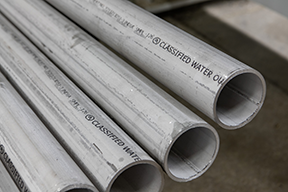
Type 304 has a minimum of 18% chromium and 8% nickel with a combined maximum of 0.08% carbon. Type 304 is versatile and is the most widely used. Some of its benefits include durability and resistance to oxidation and corrosion.
Type 316 contains 16% chromium, 10% nickel and 2% molybdenum. Molybdenum offers added corrosion resistance to chlorides. Type 316 is also durable and easy to fabricate, weld, and finish.
Stainless steel piping products features three grades: straight, low carbon, and dual.
Straight grade contains a maximum of 0.08% carbon and is notated with 304 and 316.
The low carbon grade has 0.03% or less carbon which is done to avoid carbide precipitation. Low carbon is notated as 304L and 316L.
304 dual grade means that the chemical composition is compliant to 304L while its mechanical properties are compliant to the requirements of straight grade 304. Dual grade stainless has a lower carbon content. You will see dual grade notated as 304/L, 316/L, 304/304L or 316/316L.
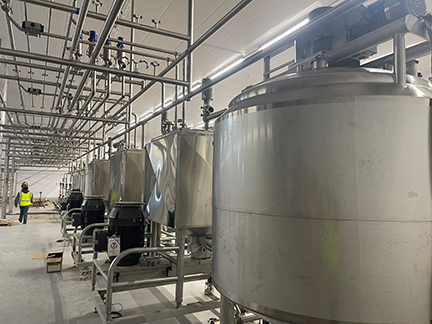
The determining factors surrounding which alloy (304 or 316) is dependent upon the application. Always consult your project team prior to installation.
The characteristics of stainless steel in types 304 & 316 include:
The reasons to use types 304/L and 316/L stainless steel include:
The Benefits of Types 304/L and 316/L Stainless Steel are:
GAIN INSIGHT INTO STAINLESS STEEL
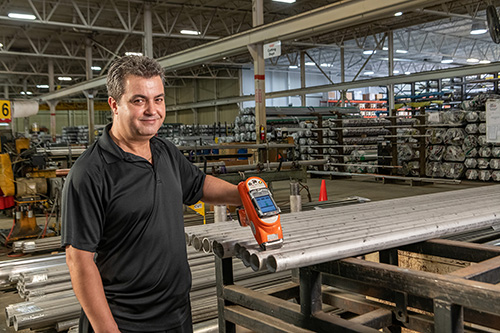
Material traceability is important because it reduces risk, provides visibility into the supply chain and it improves quality controls. At Merit, we use PMI (Positive Metal Identification) and MTRs (Material Test Reports) with our stainless steel piping components.
Positive Metal Identification (PMI) verifies the chemical composition of metals and allows. Merit Brass regularly uses PMI to identify and verify 304 or 316 specific to our stainless steel pipe and pipe nipples within our manufacturing processes and to identify and verify the valves, fittings, and flanges we master distribute.
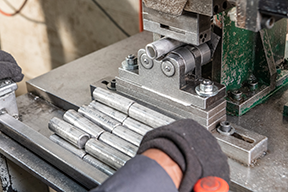
The MTR is a certified mill record of the physical & chemical composition. This document provides you with assurances that the product conforms to the ANSI & ASME specifications and meets the needs of your specific application. Merit provides you access to our online Material Test Reports (MTRs) for free. Note, however, that not all stainless steel products have MTRs.
Fre
What corrodes 316 or 304 stainless steel? |
| While stainless steel has very good corrosion resistance, the chromium-oxide (Cr203) layer is not fool-proof and can be compromised. Any scratches of the Cr203 layer can allow corrosion of the base metal to occur. Prolonged exposure to various chemicals (Chlorine, Salt, certain acids), or using cleaning agents at a higher concentration than recommended can have a negative effect on the stainless. Another way stainless can corrode is through galvanic corrosion, which is common across all metal types. |
Is stainless steel recyclable? |
| Yes, as with other common metals stainless steel can be recycled for use multiple times over. |
Is T304 or T316 stainless steel magnetic? |
| While there are some versions of stainless steel that are magnetic, austenitic stainless steels (304 and 316 are part of the austenitic family) are not magnetic. Austenitic stainless steel refers to the way the crystalline structure of the material itself is comprised. |
Can stainless steel (304 or 316) be hardened? welded? |
|
Yes, both versions of stainless steel can be welded. There are specific processes for welding stainless steel which are different than welding carbon steel and need to be followed. |
Can stainless steel 304 or 316 be annealed? |
| Both versions of stainless steel can be annealed in the same way as other metals. The purpose of annealing is to reduce the internal stresses withing the metal during production to its final shape, as well as improving the workability should it require any additional processes. |
Where to buy 304 & 316 stainless steel? |
| Merit Brass carries both types of stainless steel: T304 & T316 in pipe, valves, pipe nipples, pipe fittings, pipe flanges, tubing, thread tape, which can be purchased at any of our distribution centers. |
Can 304 or 316 stainless steel be heat treated? |
| Yes you can “heat treat” stainless, but heat treating is a broad over-arching phrase…..and annealing can be considered one form of heat treating. Always consult with the manufacturer with respect to the desired outcome and the various forms of heat treatment available. |
Can stainless steel (304 or 316) be used outside? |
| Yes, given the inherent corrosion resistance of stainless steel it can be used in an outside environment. The type of outside environment may determine which type of stainless steel to use; for example, 316 should be used in an outdoor marine environment. |

Strong Resistance to Heat, Abrasion & Corrosion

Easy to Weld & Form

Good Tensile Strength
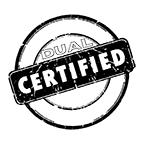
Dual Certified Straight & Low Carbon Applications Except Items Produced from Secondary Metals
FAQ
LEARN MORE